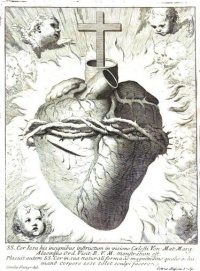Human body
From The Art and Popular Culture Encyclopedia
|
The first thing that presents itself to man, when he surveys himself, is his body.--Pascal |

|
Related e |
|
Featured: |
The human body is the entire structure of a human organism and comprises a head, neck, torso, two arms and two legs. By the time the human reaches adulthood, the body consists of close to 100 trillion cells, the basic unit of life. These cells are organised biologically to eventually form the whole body.
Reproductive system
Human reproduction takes place as internal fertilization by sexual intercourse. During this process, the erect penis of the male is inserted into the female's vagina until the male ejaculates semen, which contains sperm, into the female's vagina. The sperm then travels through the vagina and cervix into the uterus or fallopian tubes for fertilization of the ovum.
See also
- See Mikhail Bakhtin's concept of the grotesque body and notes on an embodied philosophy.
- Anatomical wax model
- Anatomy
- Bodily function
- Body orifices
- Body parts
- Body politics
- Body genres
- Death
- Disease
- Embodied philosophy
- Grotesque body
- Human beauty
- Human biology
- Health
- John Bell
- Orifice
- Somatopia
- Ugliness
- Vesalius
- Visceral


